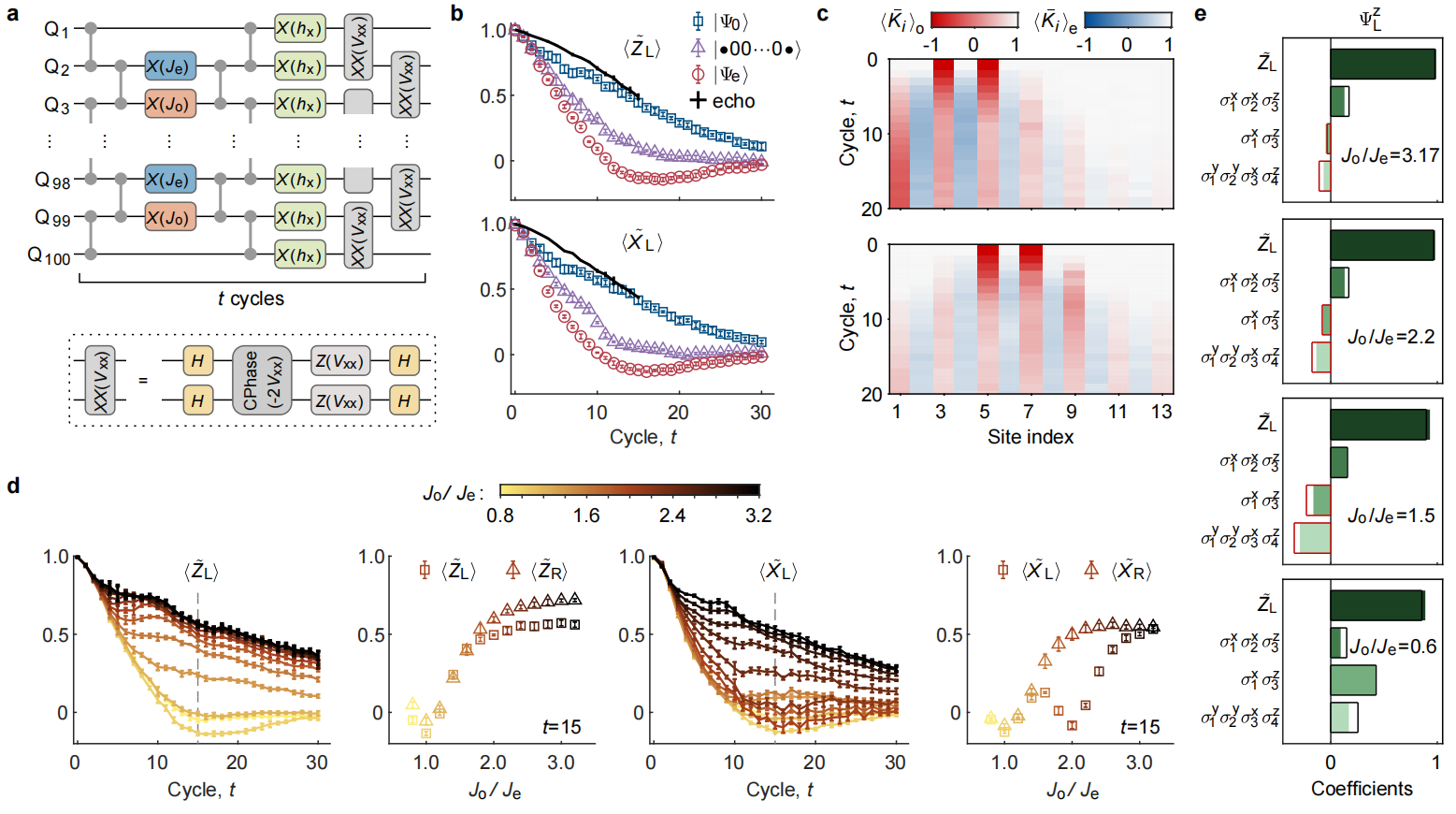A research team led by Dong-Ling Deng from Tsinghua University, in collaboration with Haohua Wang’s group at Zhejiang University and Qiujang Guo’s group from ZJU-Hangzhou Global Scientific and Technological Innovation Center and other international collaborators, has observed a distinct type of robust topological edge modes at finite temperatures in a disorder-free quantum system with a 100-qubit superconducting quantum processor for the first time. Their paper, titled “Topological prethermal strong zero modes on superconducting processors,” has recently been published as an Article in Nature.

Schematic of topological edge states at finite temperatures
Symmetry-protected topological edge states (modes) arise from novel phases of matter in condensed matter physics. They typically appear at the boundaries of a system and is protected by specific symmetries, rendering them to be resilient against noises that preserve these symmetries. This property makes them potentially valuable in quantum information processing. However, topological edge states typically only survive the ground state of a system at zero temperature. At finite temperatures, thermal excitations emerge, freely propagate and interact with the edge states, thereby destroying the edge states and erasing the quantum information stored within. Therefore, identifying and protecting topological states at finite temperatures is a significant challenge in both condensed matter physics and quantum information science.
To address this challenge, the conventional approach is to introduce disorder to make the system many-body localized, and hence localizing the thermal excitations. However, this method heavily relies on random potential fields, which not only entails high experimental costs but also faces ongoing debates regarding its stability. The research team led by Dong-Ling Deng at Tsinghua University has taken a different approach, proposing to utilize the prethermal mechanism to protect experimentally prepared topological edge states. This method does not require disorder but instead relies on the emerging symmetry to provide additional protection for the edge states, suppressing their interaction with thermal excitations.
The research team collaborated with the superconducting quantum computing team at Zhejiang University to demonstrate this approach by implementing a one-dimensional symmetry-protected topological chain composed of 100 qubits on the 125-qubit “Tianmu 2.0” superconducting quantum processor developed at Zhejiang University. With the support of high programming flexibility and high-fidelity quantum gates, they observed robust and long-lived topological edge states against thermal excitations during approximately 270 layers of two-qubit gate evolution and conducted in-depth studies on the dynamics of thermal excitations and the emerging symmetry in the system's prethermal regime. Based on this, the research teams further utilized these robust topological edge states to encode a logical Bell state, providing strong evidence of their robustness against thermal excitations.

Main experimental results of the finite-temperature topological edge states
This study established a feasible digital simulation method, providing a new experimental approach for exploring topological matter at finite temperatures. In addition, it demonstrated a potential route for achieving long-lived, robust boundary qubits in disorder-free systems, opening up a new avenue for developing noise-resilient quantum storage and manipulation technologies.
This project was partially supported by the National Natural Science Foundation of China, the National Key Research and Development Program of China, Tsinghua University Dushi College, and the Shanghai Qi Zhi Institute.
Paper link: https://www.nature.com/articles/s41586-025-09476-z